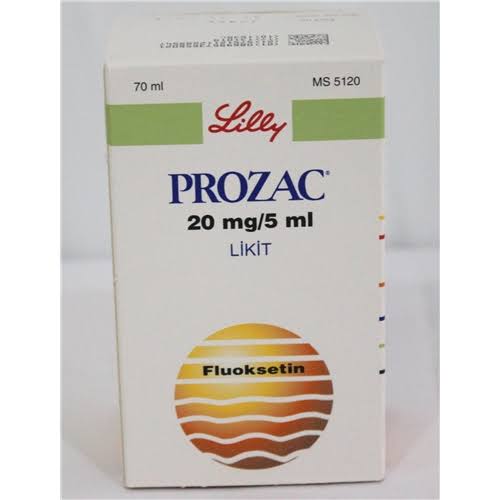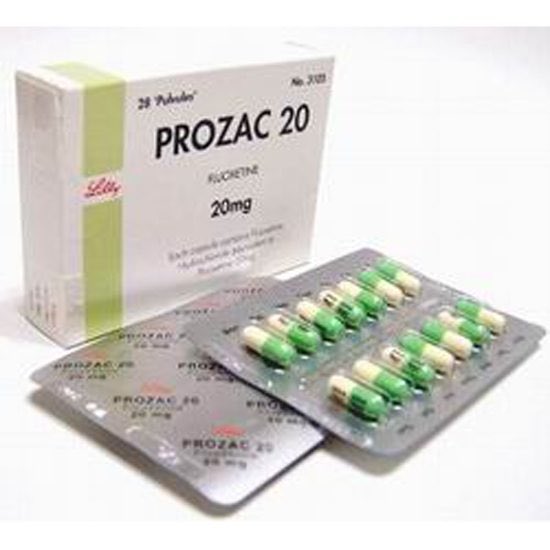What mg does prozac come in. Prozac Dosage: A Comprehensive Guide to Understand the Different Mg Options
What mg does Prozac come in? Explore the side effects, doses, generic version, and more details about this popular antidepressant medication.
Understanding Prozac Dosage
Prozac, the brand name for the antidepressant medication fluoxetine hydrochloride, is available in various dosage strengths to meet the individualized needs of patients. The dosage of Prozac can vary depending on the specific condition being treated, the patient’s age, and response to the medication.
Dosage for Major Depressive Disorder
For the treatment of major depressive disorder in adults, the initial recommended dosage of Prozac is 20 mg per day, taken orally in the morning. If insufficient clinical improvement is observed after several weeks, the dose may be increased. The maximum recommended dose of Prozac for major depressive disorder is 80 mg per day.
In pediatric patients (children and adolescents) with major depressive disorder, the initial recommended dosage is 10 or 20 mg per day. After one week at 10 mg per day, the dose may be increased to 20 mg per day. However, for lower-weight children, the starting and target dose may be 10 mg per day.
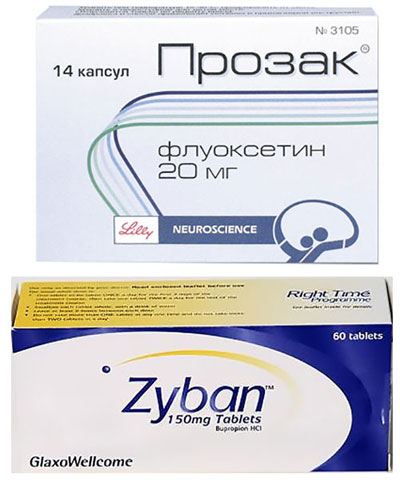
Dosage for Obsessive-Compulsive Disorder (OCD)
For the treatment of OCD in adults, the initial recommended dosage of Prozac is 20 mg per day, taken orally in the morning. If insufficient clinical improvement is observed after several weeks, the dose may be increased. The recommended dose range for OCD in adults is 20 to 60 mg per day, with a maximum dose of 80 mg per day.
In pediatric patients (children and adolescents) with OCD, the initial recommended dosage is 10 mg per day for lower-weight children, or 10 mg per day for two weeks followed by 20 mg per day for higher-weight children and adolescents. The recommended dose range for OCD in pediatric patients is 20 to 60 mg per day.
Dosage for Bulimia Nervosa
For the treatment of bulimia nervosa, the recommended dosage of Prozac is 60 mg per day, taken in the morning. Fluoxetine doses above 60 mg per day have not been systematically studied in patients with bulimia nervosa.
Dosage for Panic Disorder
For the treatment of panic disorder, the initial recommended dosage of Prozac is 10 mg per day. After one week, the dose may be increased to 20 mg per day. Fluoxetine doses above 60 mg per day have not been systematically studied for the treatment of panic disorder.
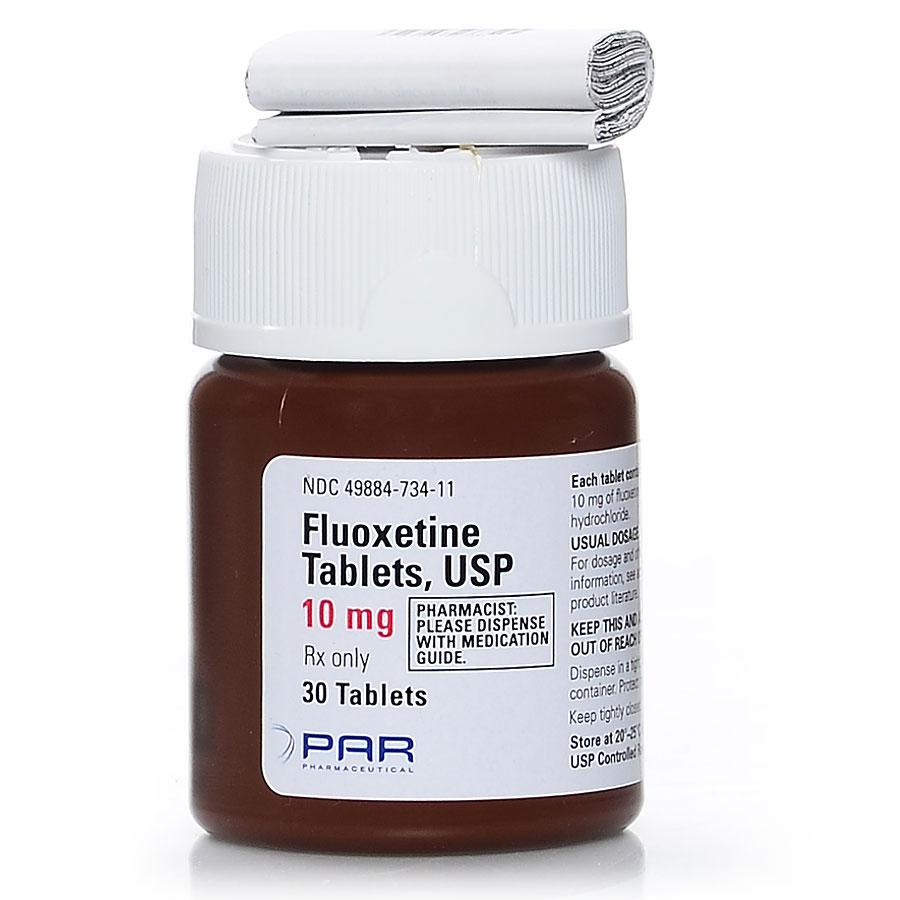
Switching from Other Antidepressants
When switching a patient from a tricyclic antidepressant (TCA) to Prozac, the dosage of the TCA may need to be reduced, and plasma TCA concentrations may need to be monitored temporarily.
Generic Versions of Prozac
Fluoxetine, the active ingredient in Prozac, is also available as a generic medication. The generic versions of Prozac are available in the same dosage strengths as the brand-name product, including 10 mg, 20 mg, and 40 mg capsules.
It is important to follow the specific dosage instructions provided by your healthcare provider when taking Prozac or any other medication. The appropriate dosage can vary depending on the individual patient’s response and the condition being treated.
What is the typical starting dose of Prozac for adults with major depressive disorder?
The typical starting dose of Prozac for adults with major depressive disorder is 20 mg per day, taken orally in the morning.
Can the Prozac dosage be increased if the initial dose is not effective?
Yes, if insufficient clinical improvement is observed after several weeks, the Prozac dosage may be increased. The maximum recommended dose for major depressive disorder is 80 mg per day.

What is the recommended dosage range for Prozac in the treatment of OCD?
The recommended dosage range for Prozac in the treatment of OCD in adults is 20 to 60 mg per day, with a maximum dose of 80 mg per day.
Is there a specific dosage for Prozac in the treatment of bulimia nervosa?
Yes, the recommended dosage of Prozac for the treatment of bulimia nervosa is 60 mg per day, taken in the morning. Fluoxetine doses above 60 mg per day have not been systematically studied for this condition.
What is the typical starting dose of Prozac for the treatment of panic disorder?
The typical starting dose of Prozac for the treatment of panic disorder is 10 mg per day. After one week, the dose may be increased to 20 mg per day.
Are there any considerations when switching from a tricyclic antidepressant (TCA) to Prozac?
Yes, when switching a patient from a TCA to Prozac, the dosage of the TCA may need to be reduced, and plasma TCA concentrations may need to be monitored temporarily.
Are there generic versions of Prozac available?
Yes, fluoxetine, the active ingredient in Prozac, is also available as a generic medication. The generic versions of Prozac are available in the same dosage strengths as the brand-name product, including 10 mg, 20 mg, and 40 mg capsules.
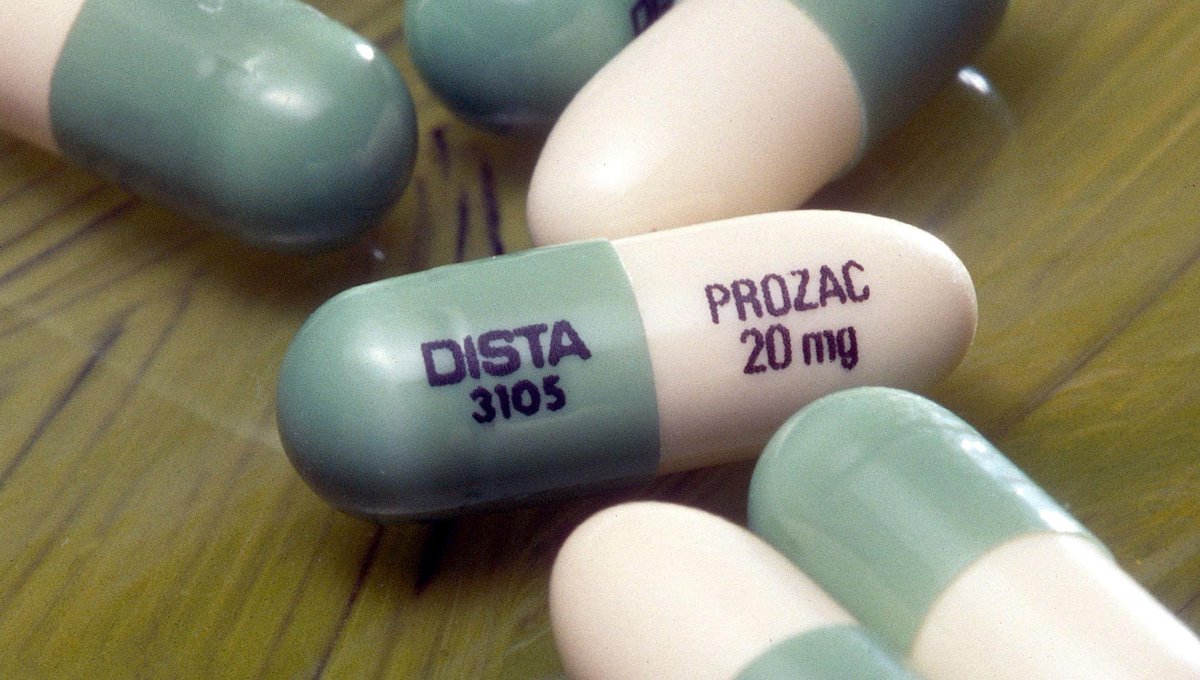
Prozac Capsules Dosage Guide – Drugs.com
Save
Generic name: Fluoxetine hydrochloride 10mg
Dosage form: capsule
Drug class: Selective serotonin reuptake inhibitors
Medically reviewed by Drugs.com. Last updated on Dec 23, 2021.
Major Depressive Disorder
Initial Treatment
Adult— Initiate PROZAC 20 mg/day orally in the morning. Consider a dose increase after several weeks if insufficient clinical improvement is observed. Administer doses above 20 mg/day once daily in the morning or twice daily (i.e., morning and noon).The maximum fluoxetine dose should not exceed 80 mg/day.
In controlled trials used to support the efficacy of fluoxetine, patients were administered morning doses ranging from 20 to 80 mg/day. Studies comparing fluoxetine 20, 40, and 60 mg/day to placebo indicate that 20 mg/day is sufficient to obtain a satisfactory response in Major Depressive Disorder in most cases [see Clinical Studies (14.1)].
Pediatric (children and adolescents)— Initiate PROZAC 10 or 20 mg/day. After 1 week at 10 mg/day, increase the dose to 20 mg/day. However, due to higher plasma levels in lower weight children, the starting and target dose in this group may be 10 mg/day. Consider a dose increase to 20 mg/day after several weeks if insufficient clinical improvement is observed. In the short-term (8 to 9 week) controlled clinical trials of fluoxetine supporting its effectiveness in the treatment of Major Depressive Disorder, patients were administered fluoxetine doses of 10 to 20 mg/day [see Clinical Studies (14.1)].
All patients— As with other drugs effective in the treatment of Major Depressive Disorder, the full effect may be delayed until 4 weeks of treatment or longer.
Periodically reassess to determine the need for maintenance treatment.
Switching Patients to a Tricyclic Antidepressant (TCA)— Dosage of a TCA may need to be reduced, and plasma TCA concentrations may need to be monitored temporarily when fluoxetine is coadministered or has been recently discontinued [see Warnings and Precautions (5. 2) and Drug Interactions (7.7)].
2) and Drug Interactions (7.7)].
Obsessive Compulsive Disorder
Initial Treatment
Adult— Initiate PROZAC 20 mg/day, orally in the morning. Consider a dose increase after several weeks if insufficient clinical improvement is observed. The full therapeutic effect may be delayed until 5 weeks of treatment or longer. Administer doses above 20 mg/day once daily in the morning or twice daily (i.e., morning and noon). A dose range of 20 to 60 mg/day is recommended; however, doses of up to 80 mg/day have been well tolerated in open studies of OCD. The maximum fluoxetine dose should not exceed 80 mg/day.
In the controlled clinical trials of fluoxetine supporting its effectiveness in the treatment of OCD, patients were administered fixed daily doses of 20, 40, or 60 mg of fluoxetine or placebo [see Clinical Studies (14.2)]. In one of these studies, no dose-response relationship for effectiveness was demonstrated.
Pediatric (children and adolescents)— In adolescents and higher weight children, initiate treatment with a dose of 10 mg/day. After 2 weeks, increase the dose to 20 mg/day. Consider additional dose increases after several more weeks if insufficient clinical improvement is observed. A dose range of 20 to 60 mg/day is recommended.
After 2 weeks, increase the dose to 20 mg/day. Consider additional dose increases after several more weeks if insufficient clinical improvement is observed. A dose range of 20 to 60 mg/day is recommended.
In lower weight children, initiate treatment with a dose of 10 mg/day. Consider additional dose increases after several more weeks if insufficient clinical improvement is observed. A dose range of 20 to 30 mg/day is recommended. Experience with daily doses greater than 20 mg is very minimal, and there is no experience with doses greater than 60 mg.
In the controlled clinical trial of fluoxetine supporting its effectiveness in the treatment of OCD, patients were administered fluoxetine doses in the range of 10 to 60 mg/day [see Clinical Studies (14.2)].
Periodically reassess to determine the need for treatment.
Bulimia Nervosa
Initial Treatment— Administer PROZAC 60 mg/day in the morning. For some patients it may be advisable to titrate up to this target dose over several days. Fluoxetine doses above 60 mg/day have not been systematically studied in patients with bulimia. In the controlled clinical trials of fluoxetine supporting its effectiveness in the treatment of Bulimia Nervosa, patients were administered fixed daily fluoxetine doses of 20 or 60 mg, or placebo [see Clinical Studies (14.3)]. Only the 60 mg dose was statistically significantly superior to placebo in reducing the frequency of binge-eating and vomiting.
Fluoxetine doses above 60 mg/day have not been systematically studied in patients with bulimia. In the controlled clinical trials of fluoxetine supporting its effectiveness in the treatment of Bulimia Nervosa, patients were administered fixed daily fluoxetine doses of 20 or 60 mg, or placebo [see Clinical Studies (14.3)]. Only the 60 mg dose was statistically significantly superior to placebo in reducing the frequency of binge-eating and vomiting.
Periodically reassess to determine the need for maintenance treatment.
Panic Disorder
Initial Treatment— Initiate treatment with PROZAC 10 mg/day. After one week, increase the dose to 20 mg/day. Consider a dose increase after several weeks if no clinical improvement is observed. Fluoxetine doses above 60 mg/day have not been systematically evaluated in patients with Panic Disorder. In the controlled clinical trials of fluoxetine supporting its effectiveness in the treatment of Panic Disorder, patients were administered fluoxetine doses in the range of 10 to 60 mg/day [see Clinical Studies (14. 4)]. The most frequently administered dose in the 2 flexible-dose clinical trials was 20 mg/day.
4)]. The most frequently administered dose in the 2 flexible-dose clinical trials was 20 mg/day.
Periodically reassess to determine the need for continued treatment.
PROZAC and Olanzapine in Combination: Depressive Episodes Associated with Bipolar I Disorder
When using PROZAC and olanzapine in combination, also refer to the Clinical Studies section of the package insert for Symbyax.
Adult— Administer fluoxetine in combination with oral olanzapine once daily in the evening, without regard to meals, generally beginning with 5 mg of oral olanzapine and 20 mg of fluoxetine. Make dosage adjustments, if indicated, according to efficacy and tolerability within dose ranges of fluoxetine 20 to 50 mg and oral olanzapine 5 to 12.5 mg. Antidepressant efficacy was demonstrated with olanzapine and fluoxetine in combination with a dose range of olanzapine 6 to 12 mg and fluoxetine 25 to 50 mg. Safety of co-administration of doses above 18 mg olanzapine with 75 mg fluoxetine has not been evaluated in clinical studies.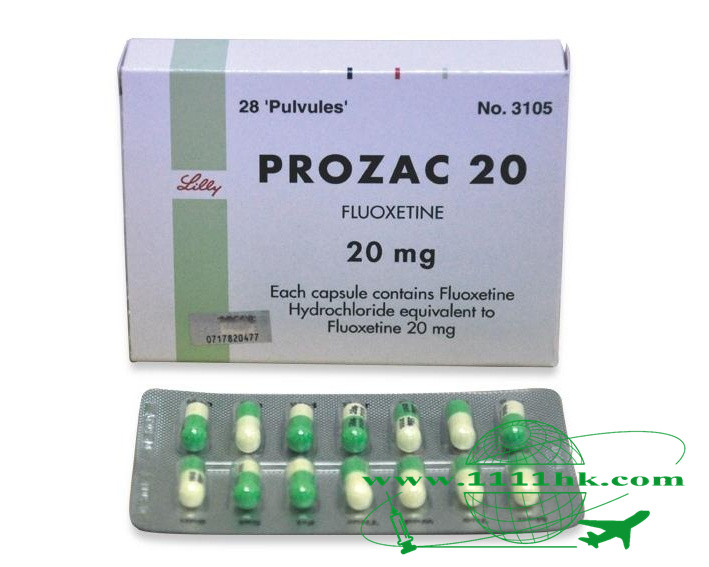 Periodically re-examine the need for continued pharmacotherapy.
Periodically re-examine the need for continued pharmacotherapy.
Children and adolescents (10 -17 years of age)— Administer olanzapine and fluoxetine combination once daily in the evening, generally beginning with 2.5 mg of olanzapine and 20 mg of fluoxetine. Make dosage adjustments, if indicated, according to efficacy and tolerability. Safety of co-administration of doses above 12 mg of olanzapine with 50 mg of fluoxetine has not been evaluated in pediatric clinical studies. Periodically re-examine the need for continued pharmacotherapy.
Safety and efficacy of fluoxetine in combination with olanzapine was determined in clinical trials supporting approval of Symbyax (fixed-dose combination of olanzapine and fluoxetine). Symbyax is dosed between 3 mg/25 mg (olanzapine/fluoxetine) per day and 12 mg/50 mg (olanzapine/fluoxetine) per day. The following table demonstrates the appropriate individual component doses of PROZAC and olanzapine versus Symbyax. Adjust dosage, if indicated, with the individual components according to efficacy and tolerability.
1 Symbyax (olanzapine/fluoxetine HCL) is a fixed-dose combination of PROZAC and olanzapine. | ||
| For Symbyax (mg/day) | Use in Combination | |
| Olanzapine (mg/day) | PROZAC (mg/day) | |
| 3 mg olanzapine/25 mg fluoxetine | 2.5 | 20 |
| 6 mg olanzapine/25 mg fluoxetine | 5 | 20 |
| 12 mg olanzapine/25 mg fluoxetine | 10+2.5 | 20 |
| 6 mg olanzapine/50 mg fluoxetine | 5 | 40+10 |
| 12 mg olanzapine/50 mg fluoxetine | 10+2.5 | 40+10 |
PROZAC monotherapy is not indicated for the treatment of depressive episodes associated with Bipolar I Disorder.
PROZAC and Olanzapine in Combination: Treatment Resistant Depression
When using PROZAC and olanzapine in combination, also refer to the Clinical Studies section of the package insert for Symbyax.
Administer fluoxetine in combination with oral olanzapine once daily in the evening, without regard to meals, generally beginning with 5 mg of oral olanzapine and 20 mg of fluoxetine. Adjust dosage, if indicated, according to efficacy and tolerability within dose ranges of fluoxetine 20 to 50 mg and oral olanzapine 5 to 20 mg. Antidepressant efficacy was demonstrated with olanzapine and fluoxetine in combination with a dose range of olanzapine 6 to 18 mg and fluoxetine 25 to 50 mg.
Safety and efficacy of fluoxetine in combination with olanzapine was determined in clinical trials supporting approval of Symbyax (fixed dose combination of olanzapine and fluoxetine). Symbyax is dosed between 3 mg/25 mg (olanzapine/fluoxetine) per day and 12 mg/50 mg (olanzapine/fluoxetine) per day. Table 1 demonstrates the appropriate individual component doses of PROZAC and olanzapine versus Symbyax. Adjust dosage, if indicated, with the individual components according to efficacy and tolerability.
Periodically re-examine the need for continued pharmacotherapy.
Safety of coadministration of doses above 18 mg olanzapine with 75 mg fluoxetine has not been evaluated in clinical studies.
PROZAC monotherapy is not indicated for the treatment of treatment resistant depression (Major Depressive Disorder in patients who do not respond to 2 antidepressants of adequate dose and duration in the current episode).
Dosing in Specific Populations
Geriatric— Consider a lower or less frequent dosage for the elderly [see Use in Specific Populations (8.5)].
Hepatic Impairment— As with many other medications, use a lower or less frequent dosage in patients with hepatic impairment [see Clinical Pharmacology (12.4) and Use in Specific Populations (8.6)].
Concomitant Illness— Patients with concurrent disease or on multiple concomitant medications may require dosage adjustments [see Clinical Pharmacology (12.4) and Warnings and Precautions (5.12)].
PROZAC and Olanzapine in Combination— Use a starting dose of oral olanzapine 2. 5 to 5 mg with fluoxetine 20 mg for patients with a predisposition to hypotensive reactions, patients with hepatic impairment, or patients who exhibit a combination of factors that may slow the metabolism of olanzapine or fluoxetine in combination (female gender, geriatric age, non-smoking status), or those patients who may be pharmacodynamically sensitive to olanzapine. Titrate slowly and adjust dosage as needed in patients who exhibit a combination of factors that may slow metabolism. PROZAC and olanzapine in combination have not been systematically studied in patients over 65 years of age or in patients less than 10 years of age [see Warnings and Precautions (5.16) and Drug Interactions (7.7)].
5 to 5 mg with fluoxetine 20 mg for patients with a predisposition to hypotensive reactions, patients with hepatic impairment, or patients who exhibit a combination of factors that may slow the metabolism of olanzapine or fluoxetine in combination (female gender, geriatric age, non-smoking status), or those patients who may be pharmacodynamically sensitive to olanzapine. Titrate slowly and adjust dosage as needed in patients who exhibit a combination of factors that may slow metabolism. PROZAC and olanzapine in combination have not been systematically studied in patients over 65 years of age or in patients less than 10 years of age [see Warnings and Precautions (5.16) and Drug Interactions (7.7)].
Discontinuation of Treatment
Symptoms associated with discontinuation of fluoxetine, SNRIs, and SSRIs, have been reported [see Warnings and Precautions (5.15)].
Switching a Patient To or From a Monoamine Oxidase Inhibitor (MAOI) Intended to Treat Psychiatric Disorders
At least 14 days should elapse between discontinuation of an MAOI intended to treat psychiatric disorders and initiation of therapy with PROZAC. Conversely, at least 5 weeks should be allowed after stopping PROZAC before starting an MAOI intended to treat psychiatric disorders [see Contraindications (4.1)].
Conversely, at least 5 weeks should be allowed after stopping PROZAC before starting an MAOI intended to treat psychiatric disorders [see Contraindications (4.1)].
Use of PROZAC with Other MAOIs such as Linezolid or Methylene Blue
Do not start PROZAC in a patient who is being treated with linezolid or intravenous methylene blue because there is an increased risk of serotonin syndrome. In a patient who requires more urgent treatment of a psychiatric condition, other interventions, including hospitalization, should be considered [see Contraindications (4.1)].
In some cases, a patient already receiving PROZAC therapy may require urgent treatment with linezolid or intravenous methylene blue. If acceptable alternatives to linezolid or intravenous methylene blue treatment are not available and the potential benefits of linezolid or intravenous methylene blue treatment are judged to outweigh the risks of serotonin syndrome in a particular patient, PROZAC should be stopped promptly, and linezolid or intravenous methylene blue can be administered. The patient should be monitored for symptoms of serotonin syndrome for five weeks or until 24 hours after the last dose of linezolid or intravenous methylene blue, whichever comes first. Therapy with PROZAC may be resumed 24 hours after the last dose of linezolid or intravenous methylene blue [see Warnings and Precautions (5.2)].
The patient should be monitored for symptoms of serotonin syndrome for five weeks or until 24 hours after the last dose of linezolid or intravenous methylene blue, whichever comes first. Therapy with PROZAC may be resumed 24 hours after the last dose of linezolid or intravenous methylene blue [see Warnings and Precautions (5.2)].
The risk of administering methylene blue by non-intravenous routes (such as oral tablets or by local injection) or in intravenous doses much lower than 1 mg/kg with PROZAC is unclear. The healthcare provider should, nevertheless, be aware of the possibility of emergent symptoms of serotonin syndrome with such use [see Warnings and Precautions (5.2)].
Frequently asked questions
- SSRI’s vs SNRI’s – What’s the difference between them?
- What does Prozac feel like when it starts working?
- Does Prozac cause weight gain or loss?
- How long does it take for Prozac to work?
- Is Prozac a controlled substance / addictive?
- Prozac vs Zoloft – What are the Differences & Similarities?
- What are some common side effects of antidepressants?
- Taking fluoxetine, what can I use for a bad cough from cold or strep throat?
More about Prozac (fluoxetine)
- Check interactions
- Compare alternatives
- Pricing & coupons
- Reviews (1,187)
- Drug images
- Side effects
- Patient tips
- During pregnancy
- Generic availability
- Support group
- Drug class: selective serotonin reuptake inhibitors
- Breastfeeding
- En español
Patient resources
- Drug Information
- Prozac (Advanced Reading)
- Prozac (Fluoxetine Capsules and Tablets)
- Prozac (Fluoxetine Solution)
Other brands
Prozac Weekly, Sarafem, Rapiflux, Selfemra
Professional resources
- Prescribing Information
Related treatment guides
- Anxiety and Stress
- Bulimia
- Depression
- Major Depressive Disorder
Further information
Always consult your healthcare provider to ensure the information displayed on this page applies to your personal circumstances.
Medical Disclaimer
Fluoxetine Dosage Guide + Max Dose, Adjustments
Save
Medically reviewed by Drugs.com. Last updated on Nov 9, 2021.
Applies to the following strengths: 90 mg; 10 mg; 20 mg; 40 mg; 60 mg; 20 mg/5 mL; 15 mg
Usual Adult Dose for:
- Bulimia
- Depression
- Obsessive Compulsive Disorder
- Panic Disorder
- Premenstrual Dysphoric Disorder
Usual Pediatric Dose for:
- Depression
- Obsessive Compulsive Disorder
Additional dosage information:
- Renal Dose Adjustments
- Liver Dose Adjustments
- Dose Adjustments
- Precautions
- Dialysis
- Other Comments
Usual Adult Dose for Bulimia
Immediate-release oral formulations: 60 mg orally once a day in the morning
Comments:
- Some patients may need to be started at a lower dose and titrated up over several days to the recommended dose.

- Daily doses greater than 60 mg have not been systematically studied for the treatment of bulimia.
Use: Acute and maintenance treatment of binge-eating and vomiting behaviors in moderate to severe bulimia nervosa
Usual Adult Dose for Depression
Immediate-release oral formulations:
Initial dose: 20 mg orally once a day in the morning, increased after several weeks if sufficient clinical improvement is not observed
Maintenance dose: 20 to 60 mg orally per day
Maximum dose: 80 mg orally per day
Delayed release oral capsules:
Initial dose: 90 mg orally once a week, commenced 7 days after the last daily dose of immediate-release fluoxetine 20 mg formulations.
Comments:
- Doses above 20 mg per day may be given in divided doses, in the morning and at noon.
- The full effect may be delayed until after at least 4 weeks of treatment.
- If a satisfactory response with the once weekly oral fluoxetine is not maintained, a change back to daily fluoxetine dosing using the immediate-release oral formulations should be considered.

- Acute episodes of Major Depressive Disorder (MDD) require several months or longer of sustained pharmacologic therapy.
- Whether the dose needed to induce remission is the same as the dose needed to maintain and/or sustain euthymia is unknown.
Use: Acute and maintenance treatment of MDD
Usual Adult Dose for Obsessive Compulsive Disorder
Immediate-release oral formulations:
- Initial dose: 20 mg orally once a day in the morning, increased after several weeks if sufficient clinical improvement is not observed.
- Maintenance dose: 20 to 60 mg orally per day
- Maximum dose: 80 mg orally per day
Comments:
- Doses above 20 mg per day may be given in divided doses, in the morning and at noon.
- The full effect may be delayed until after at least 5 weeks of treatment.
Use: Acute and maintenance treatment of obsessions and compulsions in patients with Obsessive Compulsive Disorder (OCD)
Usual Adult Dose for Panic Disorder
Immediate-release oral formulations:
- Initial dose: 10 mg orally once a day, increased after one week to 20 mg orally once a day
- Maintenance dose: 20 to 60 mg orally per day
- Maximum dose: 60 mg orally per day
Comments:
- Doses above 20 mg per day may be given in divided doses, in the morning and at noon.

- A dose increase may be considered after several weeks if clinical improvement is not observed.
- Doses greater than 60 mg per day have not been systematically studied for the treatment of panic disorder.
Use: Acute treatment of panic disorder with/without agoraphobia
Usual Adult Dose for Premenstrual Dysphoric Disorder
Immediate-release oral formulations:
Initial dose:
- Continuous regimen: 20 mg orally once a day on every day of the menstrual cycle
- Cyclic regimen: 20 mg orally once a day starting 14 days prior to the anticipated start of menstruation through to the first full day of menses, and repeated with each new cycle
Maintenance dose: 20 to 60 mg per day for either the continuous or intermittent regimens
Maximum dose: 80 mg orally per day
Comments:
- A daily dose of 60 mg has not been shown to be significantly more effective than 20 mg daily.
- Daily doses above 60 mg have not been systematically studied in patients with this condition.

- The 20 mg daily dosage has been shown to be effective for up to 6 months of treatment.
Use: Treatment of premenstrual dysphoric disorder (PMDD)
Usual Pediatric Dose for Depression
Immediate-release oral formulations:
8 to 18 years:
Initial dose: 10 to 20 mg orally once a day; the 10 mg daily dose may be increased after one week to 20 mg orally once a day
Lower weight children:
- Initial dose: 10 mg orally once a day, increased to 20 mg orally once a day after several weeks if sufficient clinical improvement is not observed
- Maintenance dose: 10 to 20 mg orally once a day
Comments:
- The full effect may be delayed until after at least 4 weeks of treatment.
- The potential risks versus clinical need should be assessed prior to using this drug in children and adolescents.
Use: Acute and maintenance treatment of MDD
Usual Pediatric Dose for Obsessive Compulsive Disorder
Immediate-release oral formulations:
7 to 17 years:
Adolescents and higher weight children:
- Initial dose: 10 mg orally once a day, increased to 20 mg orally once a day after 2 weeks
- Maintenance dose: 20 to 60 mg orally per day
- Maximum dose: 60 mg orally per day
Lower weight children:
- Initial dose: 10 mg orally once a day, increased after several weeks if sufficient clinical improvement is not observed
- Maintenance dose: 20 to 30 mg orally once a day
- Maximum dose: 60 mg orally per day
Comments:
- Additional dose increases may be considered after several more weeks if clinical improvement is insufficient.

- Doses above 20 mg per day may be given in divided doses, in the morning and at noon.
- In lower weight children, there is minimal experience with doses greater than 20 mg per day, and none with doses greater than 60 mg per day.
- The full effect may be delayed until after at least 5 weeks of treatment.
- The potential risks versus clinical need should be assessed prior to using this drug in children and adolescents.
Use: Acute and maintenance treatment of obsessions and compulsions in patients with
OCD
Renal Dose Adjustments
No adjustment recommended
Liver Dose Adjustments
Liver dysfunction (including cirrhosis):
- Immediate-release oral formulations: Lower or less frequent dosing may be appropriate in these patients
- Delayed-release oral capsules: Data not available
Dose Adjustments
A lower or less frequent dose should be considered in elderly patients, and/or those on multiple concomitant medications or with concurrent disease.
Switching from:
- MAOI therapy to this drug: At least 14 days should elapse
- This drug to MAOI therapy: At least 5 weeks should elapse
- This drug to tricyclic antidepressant (TCA) therapy: The dose of the TCA may need to be reduced and plasma levels temporarily monitored
Treatment withdrawal:
- A gradual dose reduction is recommended instead of abrupt cessation where possible.
- If intolerable symptoms occur, it is recommended to consider resuming the previously prescribed dose and to decrease the dose at a more gradual rate.
Precautions
US BOXED WARNINGS:
SUICIDAL THOUGHTS AND BEHAVIORS:
- Antidepressants increase the risk of suicidal thoughts and behavior in children, adolescents, and young adults in short-term studies. These studies did not show an increase in the risk of suicidal thoughts and behavior with antidepressant use in patients over age 24; there was a reduction in risk with antidepressant use in patients aged 65 and older.

- In patients of all ages who are started on antidepressant therapy, monitor closely for worsening and for emergence of suicidal thoughts and behaviors. Advise families and caregivers of the need for close observation and communication with the prescriber.
- Fluoxetine is not approved for use in children less than 7 years of age.
Safety and efficacy have not been established in pediatric patients younger than 7 years (OCD) and 8 years of age (MDD).
Safety and efficacy in the treatment of PMDD have not been established in pediatric patients.
Consult WARNINGS section for additional precautions.
Dialysis
No adjustment recommended
Other Comments
Administration advice:
- A once a day dose should be taken in the morning; doses greater than 20 mg per day may be divided into morning and noon doses.
- Oral dissolving tablets may be swallowed with fluid or dispersed in water just prior to administration; the tablets should not be crushed or chewed.

- Because fluoxetine may cause insomnia, night-time dosing should be limited to those patients experiencing sedation.
Storage requirements:
- Oral solution and some tablet formulations: Protect from light.
General:
- The delayed release oral capsule (given weekly) contains enteric-coated pellets.
- Oral capsules, tablets, oral solution, and delayed release oral capsules (given weekly) are bioequivalent
- Changes in dose will not be fully reflected in plasma for several weeks due to the long elimination half-lives of fluoxetine and its major active metabolite.
- The need for ongoing treatment should be regularly reviewed.
- Patients should be maintained on the lowest effective dose.
- Avoid use as monotherapy in treatment-resistant depression i.e., patients who do not respond to two antidepressants of adequate dose and duration in the current episode.
Monitoring:
- Cardiovascular: ECG monitoring (in patients with risk factors for QT-interval prolongation)
- Hepatic: Liver function
- Metabolic: Electrolyte levels (especially in patients at risk of hyponatremia), weight (especially in underweight depressed or bulimic patients)
- Nervous system: Seizure activity (especially in patients at risk of seizures), serotonin syndrome
- Psychiatric: Emergence or worsening of depression, suicidal thoughts or behavior, and/or any unusual changes in mood or behavior.

Patient advice:
- Tell your healthcare provider about all of the medicines that you take, including prescription and non-prescription medicines.
- This medicine may increase the risk of suicidal thoughts and behavior. Be alert for the emergence or worsening of symptoms of depression, any unusual changes in mood or behavior, or the emergence of suicidal thoughts, behavior, or thoughts about self-harm. Report any behavior of concern to your healthcare provider as soon as possible.
- Patients should be advised to speak to a healthcare provider if they are pregnant, intend to become pregnant, or are breastfeeding.
- This medicine may cause impaired judgment, thinking, or motor skills; do not drive a car or operate dangerous machinery until you know how this drug affects you.
Frequently asked questions
- SSRI’s vs SNRI’s – What’s the difference between them?
- Prozac vs Zoloft – What are the Differences & Similarities?
- What are some common side effects of antidepressants?
- Taking fluoxetine, what can I use for a bad cough from cold or strep throat?
More about fluoxetine
- Check interactions
- Compare alternatives
- Pricing & coupons
- Reviews (2,121)
- Drug images
- Side effects
- Patient tips
- During pregnancy
- Support group
- Drug class: selective serotonin reuptake inhibitors
- Breastfeeding
- En español
Patient resources
- Drug Information
- Fluoxetine Capsules and Tablets
- Fluoxetine Capsules and Tablets (PMDD)
- Fluoxetine Delayed-Release Capsules
- Fluoxetine Solution
Other brands
Prozac, Prozac Weekly, Sarafem, Rapiflux, Selfemra
Professional resources
- Prescribing Information
Related treatment guides
- Anxiety and Stress
- Binge Eating Disorder
- Body Dysmorphic Disorder
- Agoraphobia
Further information
Always consult your healthcare provider to ensure the information displayed on this page applies to your personal circumstances.



